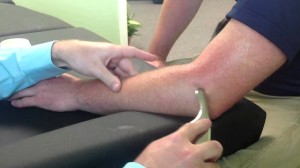How Does Soft Tissue Mobilization Work? 1
 Longtime athletes and coaches are constantly on the hunt for easy and effective ways to both help prevent common sports injuries as well as speed up recovery times when an injury does occur. Tactics like ice therapy, cupping, and foam rolling have all had their heyday recently, but one practice seems to have endured the longest – sports massage.
Longtime athletes and coaches are constantly on the hunt for easy and effective ways to both help prevent common sports injuries as well as speed up recovery times when an injury does occur. Tactics like ice therapy, cupping, and foam rolling have all had their heyday recently, but one practice seems to have endured the longest – sports massage.
Believed to have originated in ancient Greece and Rome where gladiators were prescribed massages both before and after working out or battling, sports massage has evolved throughout the centuries to incorporate more physiotherapy and recovery techniques. This has lent itself to a newer therapeutic approach called soft tissue mobilization.
What is Soft Tissue Mobilization (STM)?
An umbrella term to capture a wide array of techniques, soft tissue mobilization is any type of physiotherapy performed either manually or with instruments that help to release soft tissues in the body. Soft tissues are essentially any component of the musculoskeletal system that is not bone – so ligaments, tendons, muscles, skin, fat, fascia, cartilage, nerves, and so on.
Soft tissue injuries are common in sports, from sprains to muscle strains to tendonitis and other stress injuries. The healing process following a soft tissue injury involves a unique process of biological repair. An inflammation response from the body floods the tissue at first with fluids, blood, and eventually white blood cells; this causes the characteristic swelling, warmth, and redness of a fresh soft tissue injury like an ankle sprain. Read the rest of this entry →



